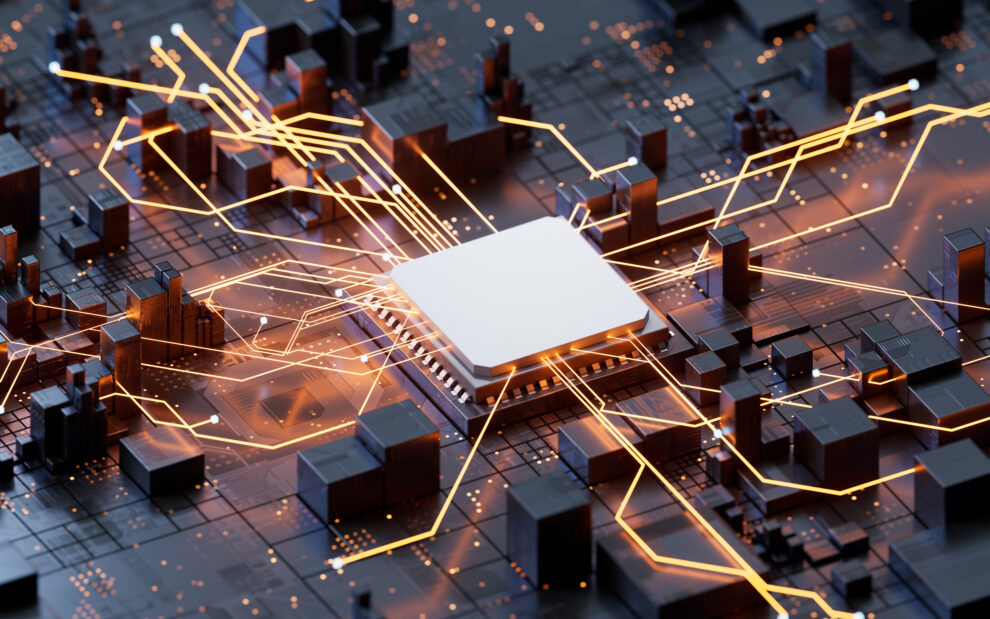There is still one area investors need to monitor closely.
Shares of Micron Technology (MU -2.17%) soared after the company reported strong results and offered upbeat guidance. Ironically, more than half a dozen Wall Street analysts lowered their price targets in the weeks ahead of its earnings report, with many scrambling now to increase their targets following its results.
With the stock up over 25% on the year, let’s look to see whether it is too late to buy Micron stock or if this could be just the beginning of its rally.
High-bandwidth memory a big opportunity
Like many other chipmakers, Micron is also seeing a boost from soaring demand for the artificial intelligence (AI) infrastructure buildout, as the company saw record data center revenue in its fiscal 2024.
One area of emerging growth is in its high-bandwidth memory (HBM) chips, which help reduce power consumption and improve performance in AI chipsets. Its newest HBM3E chip is used in Nvidia‘s (NASDAQ: NVDA) H200 processors and will be used with its new Blackwell chipsets as well.
The company said it saw “several hundred million dollars” in HBM revenue this past fiscal year and expects “multiple billions of dollars of revenue of HBM in fiscal year ’25.” It said the total addressable market (TAM) for HBM has gone from $4 billion in 2023 to more than $25 billion in 2025. It noted that its HBM production is sold out for both calendar 2024 and 2025.
Overall, for its fiscal third quarter, Micron saw its revenue surge 93% to $7.8 billion. Dynamic random-access memory (DRAM) revenue rose 93% to $5.3 billion, NAND revenue increased by 96% to $2.4 billion, and other revenue was $59 million, up 18%.
By segment, Compute and Networking revenue soared 152% to $3 billion, while Storage revenue jumped 127% to $1.7 billion. Mobile revenue climbed 55% to $1.9 billion, while Embedded revenue rose 36% to $1.2 billion. Adjusted earnings per share (EPS) came in a $1.18 compared to a loss of $1.07 a year ago. That was well ahead of the adjusted EPS of $1.11 that analysts were expecting.
Looking ahead, Micron guided for fiscal Q1 revenue to be between $8.5 billion and $8.9 billion, with gross margins between 38.5% and 40.5%. It is looking for adjusted EPS of between $1.66 and $1.82. Analysts were looking for adjusted EPS of $1.52 on revenue of $8.27 billion.
After spending $8.1 billion in capital expenditures (capex) in fiscal 2024, the company said it expects that amount to be significantly higher in fiscal 2025. Unlike many chipmakers today, Micron does much of its own chip manufacturing and is building new fabs (chip manufacturing facilities) in New York and Idaho. Its increased capex will also go toward investments in HBM chips.

Image source: Getty Images.
Is it too late to buy Micron stock?
Micron is enjoying strong growth from the AI infrastructure buildout and sees huge potential in its HBM chips. However, it is worth noting that it is not the only HBM supplier. South Korea’s SK Hynix is the main supplier of these chips to Nvidia. Samsung also makes HBM chips but has run into some technological issues with them.
It’s also worth noting that while Micron is manufacturing its own chips, SK Hynix uses Taiwan Semiconductor Manufacturing, or TSMC for short, to produce its chips. Given that Nvidia likely needs as many HBM chips as possible and that Micron isn’t taking up capacity at TSMC’s fabs, it should remain a strong second-source supplier to Nvidia in this area.
From a valuation perspective, Micron’s stock appears pretty cheap, trading at a forward price to earnings (P/E) multiple of just over 12 based on analyst estimates of $9.05 for the current fiscal year. It wouldn’t be surprising to see those estimates increased in the coming days and weeks after its strong fiscal Q1 guidance.
However, a company like Micron will trade at a much lower multiple than chip companies like Nvidia or Arm Holdings as both DRAM and NAND memory tend to be very cyclical in nature. There is still some worry that DRAM inventory is too high in areas such as smartphones and PCs and that, eventually, this will cause prices to come down. Thus, how Micron performs over the next year could very much depend on how large of a hardware refresh cycle there is due to AI and whether it can soak up this supply to stabilize prices.
While the HBM opportunity is real and likely to continue growing, the worries about DRAM oversupply and pricing are also real. As such, I’d continue to hold the stock, but I wouldn’t be rushing out to buy it after this jump. I would continue to monitor comments on DRAM pricing and supply.
Geoffrey Seiler has no position in any of the stocks mentioned. The Motley Fool has positions in and recommends Nvidia and Taiwan Semiconductor Manufacturing. The Motley Fool has a disclosure policy.









